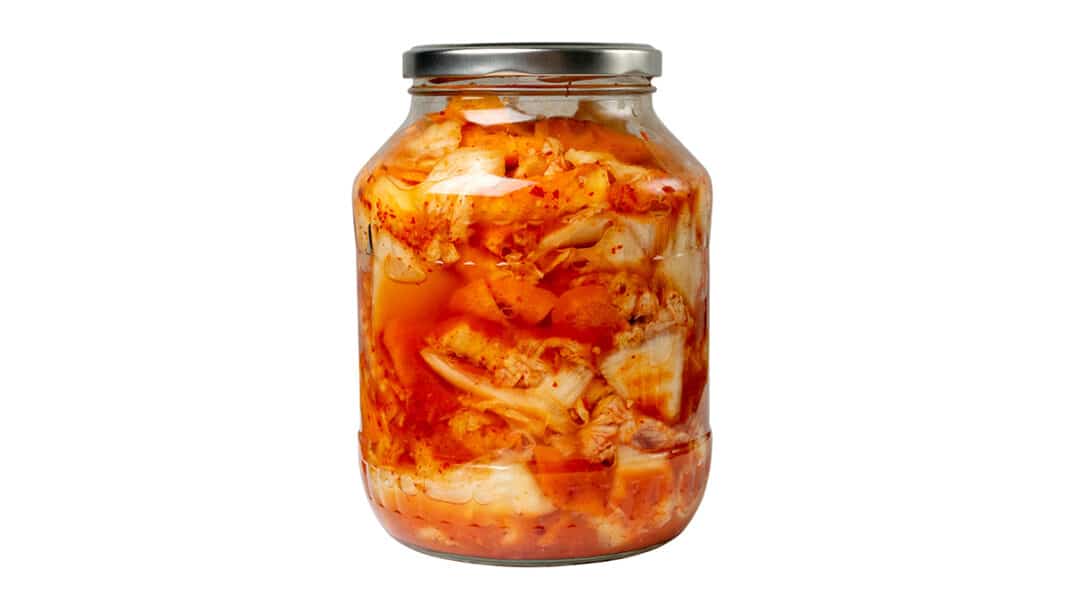Nutrition Trends: Buy or Bye?
Which trendy products live up to their claims?

It seems like every day there is a hot new fad diet or nutrition superstar in the news or splashed across social media. The trick is that it’s challenging to figure out which nutrition trends are around for the long haul and what will fizzle out.
Below Matthew Kadey, MS, RD, James Beard Award–winning food journalist, dietitian and author of the cookbook Rocket Fuel: Power-Packed Food for Sport + Adventure (VeloPress 2016), examines some current nutrition trends and explains which ones are worth considering.
Chickpea Pasta
A legume-based pasta made from chickpeas is increasingly becoming a fixture on noodle nights, but is it worth the hype? A 2-ounce serving of chickpea pasta supplies about 13 grams of protein and 6 g of fiber—that’s roughly twice as much protein and three times as much fiber as traditional pasta made from wheat flour.
For some people, this will make the pasta more satiating and can help them meet daily fiber requirements.
Using chickpea penne or rotini can be an easy way to sneak more fiber in if someone is already including pasta in their diet. The extra protein and fiber can also help blunt spikes in postmeal blood sugar, which could be beneficial in combating metabolic conditions like type 2 diabetes. Chickpea pasta also provides several vital micronutrients like magnesium, iron and potassium.
The verdict: These new-generation noodles prove that some food innovations and nutrition trends are worth embracing. So go ahead and dump your Bolognese on those chickpeas, even if not every Italian grandma would approve.
See also: Chickpea Pasta: Buy or Bye?
Kimchi Nutrition
It’s nearly impossible to discuss Korean cuisine without mentioning their most revered culinary item: kimchi. And with fermented foods witnessing a major renaissance of late, it’s hard not to notice this spicy cabbage appearing on more grocery store shelves and Instagram feeds. American chefs have even featured kimchi on burgers and grilled cheese, so let’s take a look at kimchi nutrition.
The ingredients: Although several vegetables can be used to make Korea’s signature dish—including radishes, bok choy, cucumbers or turnips—napa cabbage is most often the star of the show. The veggies are combined with seasonings including chili powder and fish sauce, then left to ferment for several days by lactobacillus bacteria.
Recent research suggests that a diet that includes more fermented foods like kimchi can help increase the diversity of beneficial microorganisms in our digestive microbiome, which may confer various immune, digestive and other health benefits. And the nutrients and antioxidants found in the vegetables used to make kimchi might still be present in the final fermented product. However, research on the direct health effects of kimchi is scarce, and it’s not likely most Americans are eating enough to have a serious health impact.
People who are best served by watching their sodium intake need to know that kimchi can be considered a high-sodium food.
The verdict: Spicy and crunchy kimchi can certainly fit into a well-balanced diet and is a way to introduce more probiotics and flavor nuances into your menu. Just know that no single fermented food is going to be the ultimate health saver.
See also: Bye or Buy? Kimchi Nutrition
Kombucha
As the hype surrounding probiotics continues to soar, so does our thirst for kombucha. This trendy beverage is made by adding certain strains of bacteria and yeast called SCOBY along with sugar to tea, then allowing it to ferment for a week or more. It has a slightly sour, almost vinegar-like taste, and most brands will include other flavorings like hibiscus, ginger or lime.
Proponents say a daily kombucha habit can help tilt the balance in our guts in favor of the beneficial microorganisms leading to better gut and immune health. Indeed, kombucha can be a convenient way to welcome more probiotics into your life, especially if you don’t eat much yogurt and other fermented foods. Yet, there is little research to demonstrate that drinking kombucha itself has a measurable impact on the microbiome and certain health measures.
There are countless strains of probiotics out there and perhaps the ones in a bottle of kombucha aren’t the ones you need most. It’s also hard to know how many live probiotics you are getting in that pricey little bottle. And some brands add generous amounts of sugar and fruit juice to make it more palatable to the masses and, in turn, render the drink closer to soda.
The verdict: Even though kombucha contains some good stuff like probiotics and is most often a better choice than heavily sweetened drinks, many of the health claims surrounding the fermented drink are suspect. It’s a good idea to drink it simply because you enjoy kombucha instead of thinking of it as the ultimate health elixir. And always look for bottles with lower sugar levels.
See also: Kombucha: Bye or Buy?
Alkaline Water
Promoters of the so-called alkaline diet and alkaline water believe that by consuming foods and drinks that are less acidic and, in turn, promoting an alkaline environment in the body, you’ll be less susceptible to several health issues, including cancer and osteoporosis. Some athletes believe that a lower acid load can improve recovery from training loads, too.
Bottles of alkaline water tend to come in at a pH of 8 or 9. This number means it’s more basic (less acidic) than regular water. That’s because it contains minerals, including calcium and potassium, that make the water more alkaline. There’s no quality research backing any of the health claims associated with this nutrition trend.
First, it is impossible to change the body’s pH in any meaningful way through the food and drinks you consume. The kidneys are largely responsible for maintaining a balanced pH throughout the body, known as acid-base homeostasis, and it’s very tightly regulated. Sipping pricey alkaline water won’t help you better balance the acid in your body: Your body is already very efficient at doing that.
The verdict: Don’t waste your money on these false promises. Tap water provides the hydration you need at a fraction of the cost.
See also: Alkaline Water: Buy or Bye?




